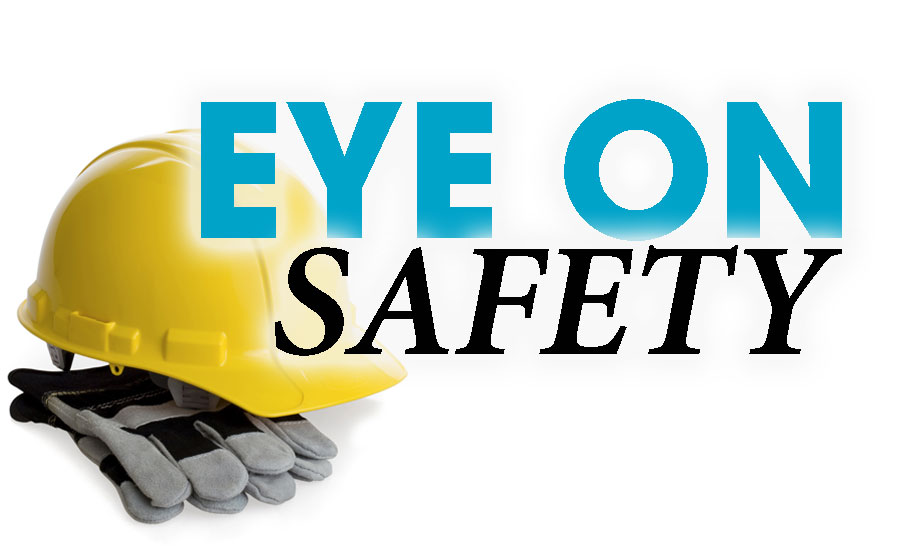OSHA has published its top 10 most frequently cited standards list for the fiscal year 2020 (October 1, 2019 through September 30, 2020). Each year following the publication of the top 10 list Eye on Safety takes a look at the list to see what has changed and also where workplace safety professionals might find areas for improvement in their own safety programs.
The top 10 most cited violations are:
1. Fall Protection, construction (29 CFR 1926.501)
2. Hazard Communication Standard, general industry (29 CFR 1910.1200)
3. Respiratory Protection, general industry (29 CFR 1910.134)
4. Scaffolding, general requirements, construction (29 CFR 1910.451)
5. Ladders, construction (29 CFR 1910.134)
6. Control of Hazardous Energy (lockout/tagout), general industry (29 CFR 1910.147)
7. Powered Industrial Trucks, general industry (29 CFR 1910.178)
8. Fall Protection – Training Requirements (29 CFR 1926.503)
9. Eye and Face Protection (29 CFR 1926.102)
10. Machinery and Machine Guarding, general requirements (29 CFR 1910.212)
In general, the list of the most frequently cited standards has remained consistent with the previous year. Respiratory protection moved up in the list from the previous year from number 5 to number 3.
The following provides a summary description of categories that most likely relate to the wholesale/distribution environment. The summaries are intended to provide a high-level overview of the OSHA standards, and possibly provide some guidance on where you might want to further evaluate your current program against the specific standards. In addition, where available, the reader is provided links to training programs covering the safety topic offered by the ASA Education Foundation.
Fall protection
The section most cited is 1926.501 that sets forth the requirements for employers to provide fall protection systems. Falls are among the most common causes of serious work related injuries and deaths. Employers must set up the work place to prevent employees from falling off of overhead platforms, elevated work stations or into holes in the floor and walls. Specific areas covered in the section include: structural integrity of walking/working surfaces; unprotected sides and edges; leading edges; hoist areas; holes; steep roofs; and protection from falling objects.
ASA Education Foundation training on this area includes: Slips, Trips and Falls
Hazard communication
Hazard communication requirements are defined in section 1910.1200 and the purpose of this section is to ensure that the hazards of all chemicals produced or imported are classified, and that information concerning the classified hazards is transmitted to employers and employees. Employers are required to develop, implement, and maintain at each workplace, a written hazard communication program.
ASA Education Foundation training in this area includes: Hazard Communication and Basics: Hazard Awareness for Supervisors.
Respiratory protection
Section 1910.134 states “In the control of those occupational diseases caused by breathing air contaminated with harmful dusts, fogs, fumes, mists, gases, smokes, sprays, or vapors, the primary objective shall be to prevent atmospheric contamination. This shall be accomplished as far as feasible by accepted engineering control measures (for example, enclosure or confinement of the operation, general and local ventilation, and substitution of less toxic materials). When effective engineering controls are not feasible, or while they are being instituted, appropriate respirators shall be used.” Specific issues noted over the last year related to the following: providing a medical evaluation to determine ability of employee’s ability to use the respirator; no written respirator protection program; and lack of ensuring the employee is using a tight-fitting face piece.
ASA Education Foundation training in this area includes: Personal Protective Equipment Fundamentals
Ladders
Ladders are covered under section 1926.1053 of the OSHA standards, which applies to almost all ladders including job-made ladders. The requirements go into significant detail so I encourage the reader to review the requirements. When purchasing ladders, you should look for compliance to the appropriate American National Standards Institute (ANSI) ASC A14 standards
An important aspect of ladder safety are individuals carrying items. According to the U.S. Bureau of Labor Statistics, 50% of all ladder-related accidents were due to individuals carrying items as they climbed. The OSHA standards state: “Each employee shall use at least one hand to grasp the ladder when progressing up and/or down the ladder.”
ASA Education Foundation training in this area includes: Ladder Safety
Powered industrial trucks
The section most cited for powered industrial trucks is Section 1910.178. This section applies to “fire protection, design, maintenance and use of fork trucks, tractors, platform lift trucks, motorized hand trucks and other specialized industrial trucks powered by electric motors or internal combustion engines.” The requirements include:
- Approved trucks shall bear a label or some other identifying mark indicating approval by the testing laboratory. See paragraph (a)(7) of this section and paragraph 405 of “American National Standard for Powered Industrial Trucks, Part II, ANSI B56.1-1969;”
- Modifications and additions which affect capacity and safe operation shall not be performed by the customer or user without manufacturer’s prior written approval; and
- There are training requirements in the section that need to be reviewed to ensure compliance; and The OSHA standards section 1910.178 need to be reviewed to determine your powered industrial trucks have the appropriate designation for the intended use environment.
ASA Education Foundation training in this area includes: Basics: Forklift Re-Fueling Safety, Basics: Forklift Safety, Basics:Forklift Safety for Supervisors and Forklift/Powered Industrial Truck Safety.
ASA and the ASA Safety Committee are committed to assisting those responsible for workplace safety in providing a safe workplace environment to their employees. We encourage you to visit the ASASafety Web Page and the ASA SafetyTraining Courses webpage for more safety training programs offered through the ASA Education Foundation.





